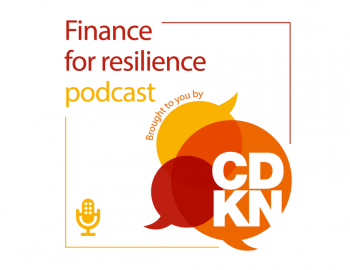REPORT: Climate finance for cities
REPORT: Climate finance for cities
Sam Barnard of Overseas Development Institute introduces his new report: Climate Finance and Cities - How Can Climate Funds Best Support Low Carbon and Climate Resilient Urban Development?
The way in which cities develop over the coming decades will play a major role in determining the success of climate change mitigation efforts and the degree to which climate change impacts those at risk. Yet most cities in the developing world face severe barriers to planning and financing the infrastructure investments necessary to steer their growth in a climate compatible way. International public climate finance is a fraction of total financial flows, but has the potential to play a pivotal role in helping municipal governments and other urban actors overcome the many barriers they face.
This paper reviews the approaches taken by multilateral climate funds in the period 2010-2014 to support low-emission and climate-resilient development in developing country cities. It identifies US$842 million in approved climate finance for explicitly urban projects, which equates to just over one in every ten dollars spent on climate finance over these five years. The majority of this finance has supported low-carbon urban transport systems in fast-growing middle-income countries. Adaptation funds financed only a handful of explicitly urban projects in the review period.
The report highlights the following implications for future climate fund engagement at the urban level:
- Climate funds must focus on catalysing action by others. There is space for climate funds to more consistently focus on using their resources to enable scaled-up actions by others, recognising that public climate finance will always represent a very small fraction of total urban infrastructure investment flows. They should carefully consider the nature of their support before directly financing large urban infrastructure projects, some of which would likely proceed without their assistance.
- Climate funds need to develop appropriate access arrangements for reaching the most vulnerable urban residents. The trend towards expanding the range of institutions that can channel finance from climate funds creates opportunities to engage sub-national institutions and other entities that can target local groups and meet the needs of the most vulnerable urban residents. The debate is ongoing over which models of intermediation between the international and local levels make most sense. The way in which funds navigate this challenge will determine whether they can add value to many urban resilience-building activities already underway.
- Mainstreaming climate risks and mitigation into local governance must remain a priority, but is not a solution by itself. Climate fund support to the development of coherent enabling environments for low-carbon and climate resilient urban investment is valuable, but only to the extent to which it actually influences activities on the ground. Climate fund investment strategies must consider the political and economic factors at play in any given context and seek to support those actors that will best deliver results in practice.
- Climate funds can expand their impact by supporting urban project preparation. There is great potential for funds to support municipal governments in developing business cases for climate-relevant investment projects and matchmaking them with private and public financiers. It is frequently a lack of capacity to prepare 'bankable' projects that is restricting investment in urban infrastructure rather than a lack of liquid capital.


